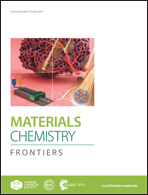A general low-temperature synthesis route to polyanionic vanadium phosphate fluoride cathode materials: AVPO4F (A = Li, Na, K) and Na3V2(PO4)2F3†
Abstract
Phosphate fluoride-based cathode materials attract great interest for secondary batteries as they offer a very rich crystal chemistry that allows one to finely tune the electrochemical properties. Among them, tavorite-LiVPO4F exhibits the highest theoretical energy density (655 W h kg−1) and is therefore strongly investigated in the field. However, the solid-state reactions reported for the synthesis of this material generally lead to a partial oxidation of the compound and the formation of side-products due to the evaporation of fluorine occurring at elevated temperature. Herein, we show that the use of a new liquid-phase fluorolytic route allows to tackle this issue and leads to phase-pure LiVPO4F at a low temperature of 240 °C. By slightly changing the synthesis parameters, we generalized this soft chemistry method to the related Na3V2(PO4)2F3 and (Na,K)VPO4F cathode materials that are also highly relevant for battery applications. The obtained materials exhibit good electrochemical performance, with almost full capacity reached at low rates. The versatility of the reported synthesis is therefore worth exploring for other polyanionic systems.



 Please wait while we load your content...
Please wait while we load your content...